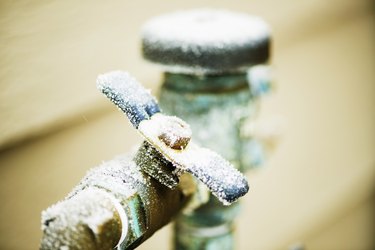Ways to Protect Your Pipes from Freezing Damage: Essential Advice
Ways to Protect Your Pipes from Freezing Damage: Essential Advice
Blog Article
What're your thoughts with regards to How to prepare your home plumbing for winter weather?

Cold weather can damage your plumbing, especially by freezing pipes. Below's just how to avoid it from taking place and what to do if it does.
Intro
As temperatures decrease, the risk of icy pipes increases, possibly resulting in pricey repair work and water damages. Understanding exactly how to stop frozen pipelines is crucial for property owners in cool climates.
Comprehending Icy Pipelines
What creates pipes to freeze?
Pipes freeze when subjected to temperature levels listed below 32 ° F (0 ° C) for expanded durations. As water inside the pipelines ices up, it expands, putting pressure on the pipe walls and potentially causing them to break.
Dangers and damages
Icy pipelines can lead to water system disturbances, residential property damages, and expensive repair work. Burst pipes can flood homes and trigger substantial architectural damages.
Signs of Frozen Water Lines
Determining frozen pipes early can avoid them from rupturing.
Just how to determine frozen pipelines
Look for decreased water circulation from faucets, unusual smells or sounds from pipes, and noticeable frost on exposed pipelines.
Avoidance Tips
Insulating vulnerable pipes
Cover pipes in insulation sleeves or utilize heat tape to safeguard them from freezing temperature levels. Focus on pipelines in unheated or exterior areas of the home.
Home heating strategies
Keep interior areas properly heated up, specifically locations with pipes. Open up cabinet doors to allow warm air to distribute around pipes under sinks.
Securing Exterior Pipes
Yard pipes and outdoor faucets
Disconnect and drain yard tubes prior to winter months. Mount frost-proof faucets or cover outside taps with protected caps.
What to Do If Your Pipes Freeze
Immediate actions to take
If you suspect icy pipelines, keep taps open up to soothe stress as the ice melts. Make use of a hairdryer or towels taken in warm water to thaw pipes gradually.
Long-Term Solutions
Structural modifications
Take into consideration rerouting pipes away from outside walls or unheated locations. Include extra insulation to attic rooms, cellars, and crawl spaces.
Updating insulation
Purchase high-grade insulation for pipelines, attic rooms, and walls. Correct insulation assists keep constant temperature levels and decreases the risk of icy pipelines.
Conclusion
Stopping icy pipes requires positive actions and fast responses. By comprehending the causes, signs, and preventive measures, house owners can secure their pipes throughout winter.
5 Ways to Prevent Frozen Pipes
Drain Outdoor Faucets and Disconnect Hoses
First, close the shut-off valve that controls the flow of water in the pipe to your outdoor faucet. Then, head outside to disconnect and drain your hose and open the outdoor faucet to allow the water to completely drain out of the line. Turn off the faucet when done. Finally, head back to the shut-off valve and drain the remaining water inside the pipe into a bucket or container. Additionally, if you have a home irrigation system, you should consider hiring an expert to clear the system of water each year.
Insulate Pipes
One of the best and most cost-effective methods for preventing frozen water pipes is to wrap your pipes with insulation. This is especially important for areas in your home that aren’t exposed to heat, such as an attic. We suggest using foam sleeves, which can typically be found at your local hardware store.
Keep Heat Running at 65
Your pipes are located inside your walls, and the temperature there is much colder than the rest of the house. To prevent your pipes from freezing, The Insurance Information Institute suggests that you keep your home heated to at least 65 degrees, even when traveling. You may want to invest in smart devices that can keep an eye on the temperature in your home while you’re away.
Leave Water Dripping
Moving water — even a small trickle — can prevent ice from forming inside your pipes. When freezing temps are imminent, start a drip of water from all faucets that serve exposed pipes. Leaving a few faucets running will also help relieve pressure inside the pipes and help prevent a rupture if the water inside freezes.
Open Cupboard Doors
Warm your kitchen and bathroom pipes by opening cupboards and vanities. You should also leave your interior doors ajar to help warm air circulate evenly throughout your home.

We hope you enjoyed our piece on Prevent Frozen Pipes . Thanks for taking a few minutes to read through our piece of content. Sharing is caring. Who knows, you may just be helping someone out. Bless you for your time. Kindly visit our site back soon.
Request Your Service Report this page